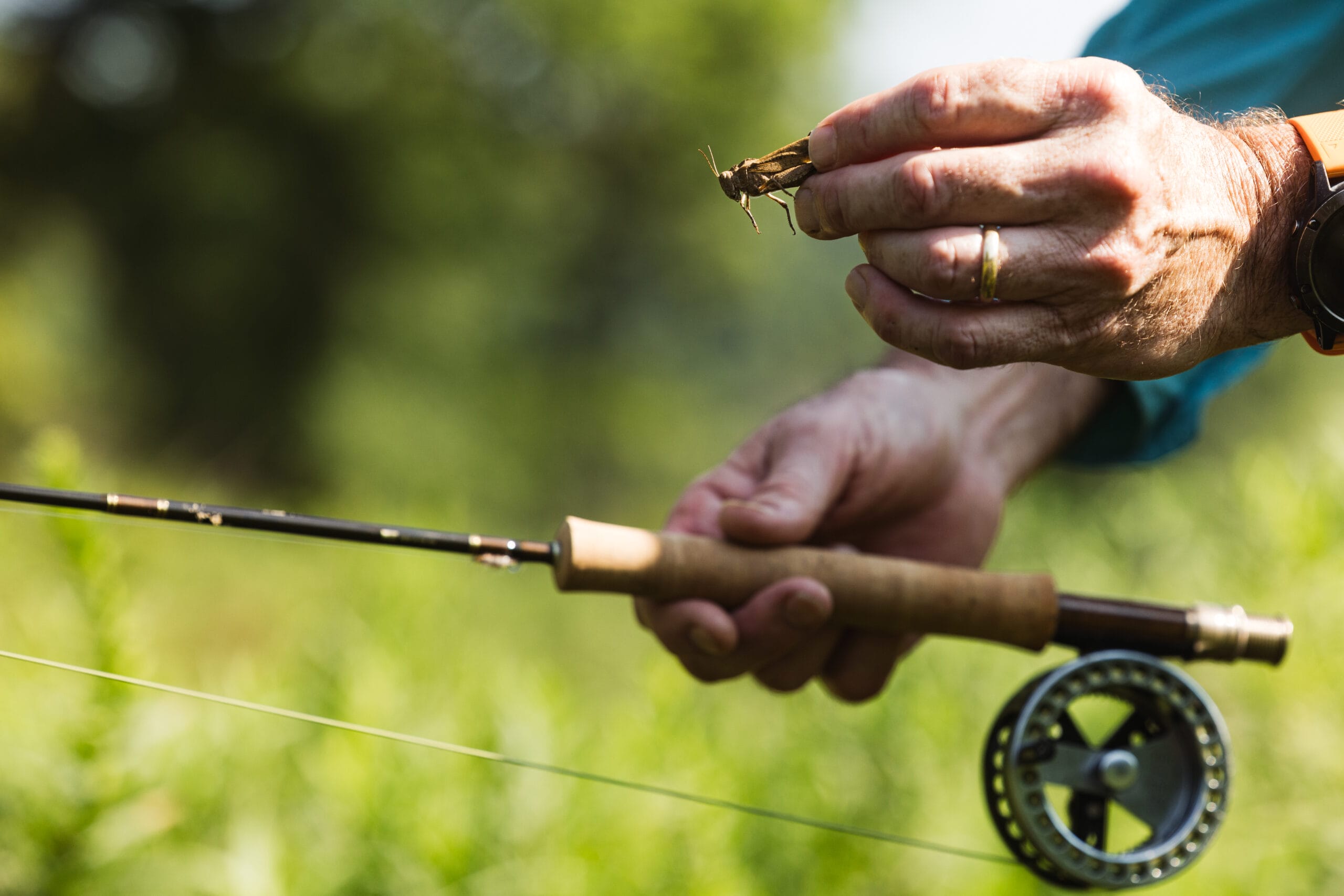“Ease up to the edge and just dap the fly,” Peter Jonas said as we sneaked up to the banks of a sinewy spring creek in Wisconsin’s Buffalo County. “You might not see the take, but you’ll hear it.”
Carefully I dropped the big Chubby Chernobyl fly into the water. A second later: “Bloop!”
And another 12-inch brown trout, its golden flanks spotted black and brilliant red, was soon in the net.
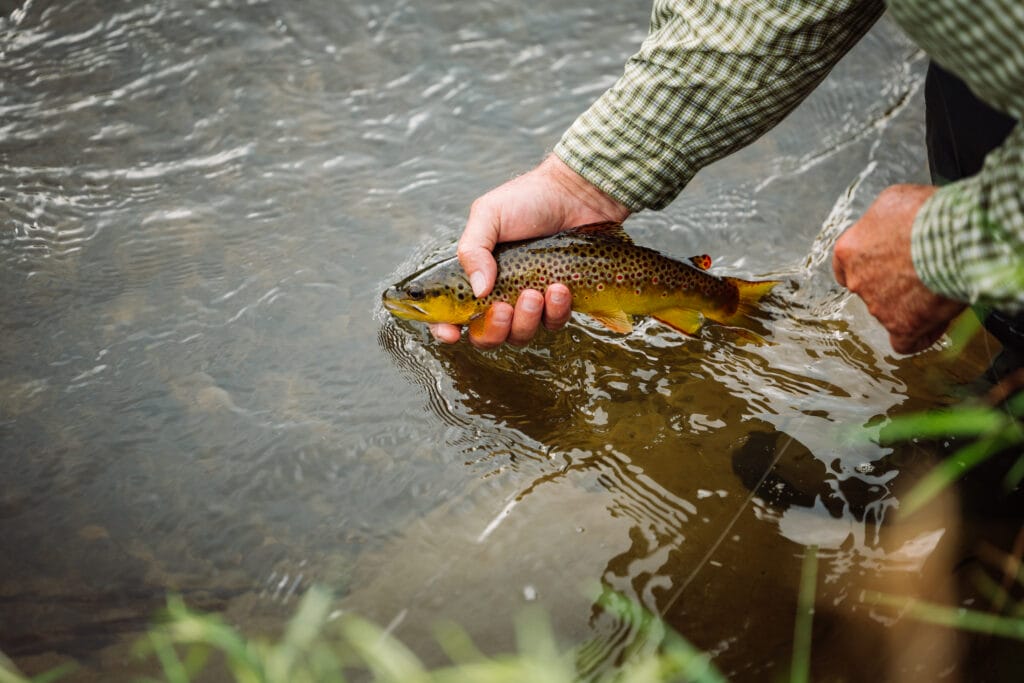
Fish thanks to farms
We were halfway through three days of Jonas showing photographer, Justin Carfagnini and me a handful of Driftless streams that had been restored with help from funding from the Farm Bill, which has many programs to help agricultural landowners improve stream health.
Originally the trip was set for June, but heavy rains necessitated postponing it until August. Jonas, TU’s partnership coordinator in the Driftless, was OK with the move.
“It will be terrestrial season,” he told me over the phone. “The fishing should be even better.”
The Driftless, one of TU’s Priority Waters, has some fair hatches in the spring and early summer. But there’s nothing quite like terrestrial season. The region features thousands of miles of spring-fed trout streams, almost all of which flow through working farms.
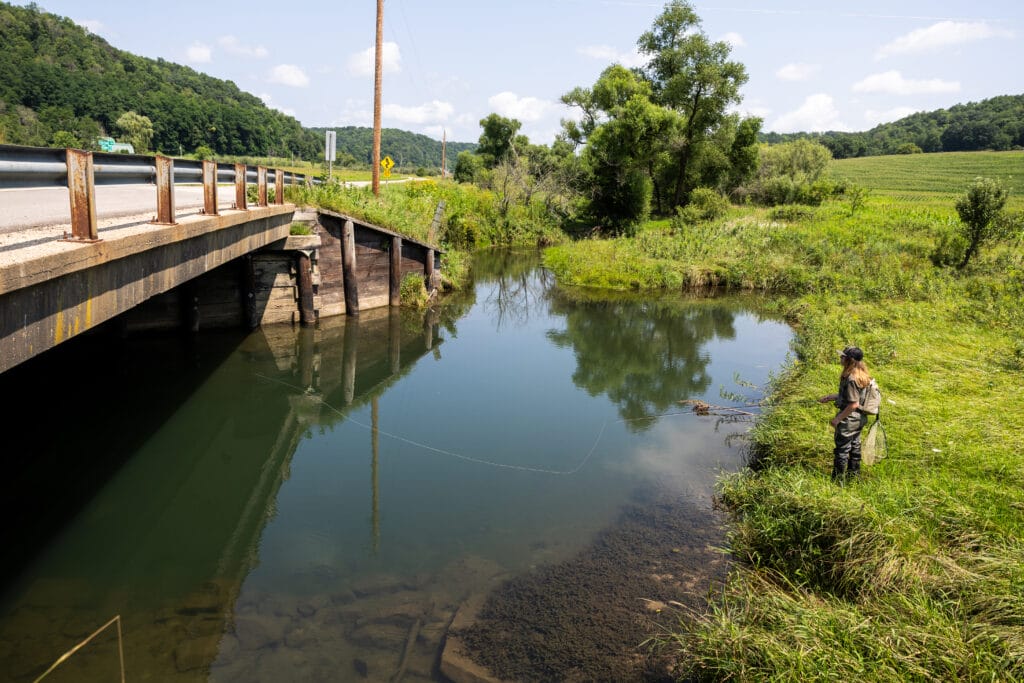
Grasshoppers and beetles love the tall native weeds and grasses along the streams and fortunately for hungry trout — and those of us who like to chase them — plenty end up in the water.
Fly choices
It was relatively early in terrestrial season, so most of the hoppers we flushed while walking along the streams were still in the nymphal stage — green, flightless and maybe a half-inch long.
Jonas typically defaults to a fly close to the size of most naturals he’s seeing. He spent most of the time using hoppers and beetles in sizes 10 to 14. I opted for slightly larger flies, mainly because they’re easier to see.
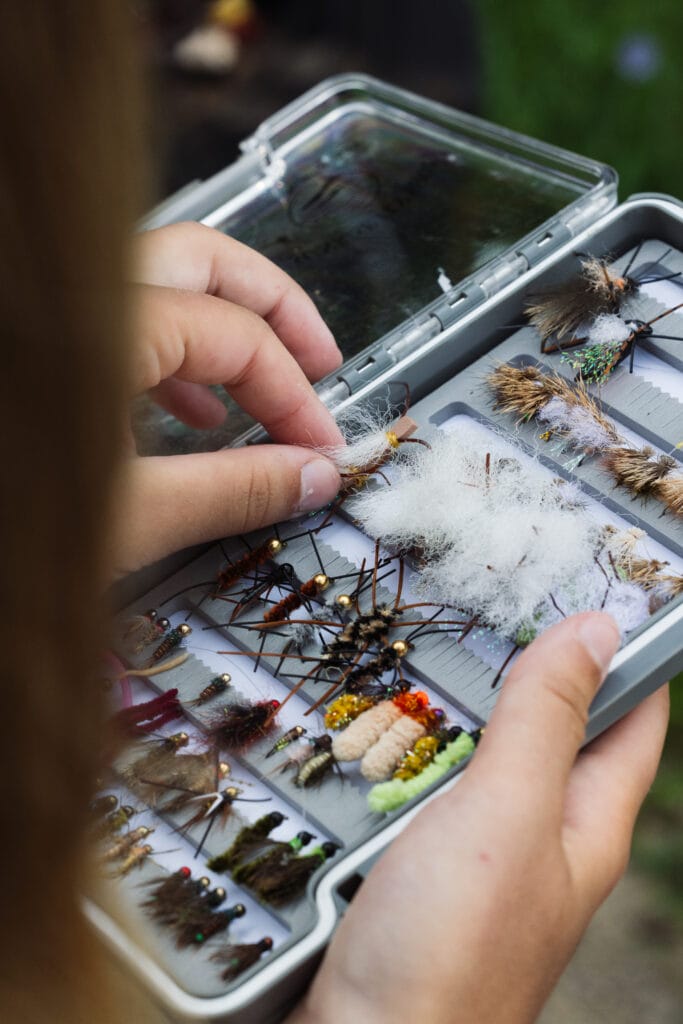
While the Driftless has some popular stream stretches that get some pressure, the sheer amount of water helps spread anglers out. In three days, we saw just three other anglers (and they were together).
So, as it often is when fishing terrestrials on lightly pressured water, the pattern was less important than presentation. Good casts to good water usually drew strikes. Over the course of the three days, we caught fish on everything from simple foam flies to more complicated patterns like the Whitlock Hopper.
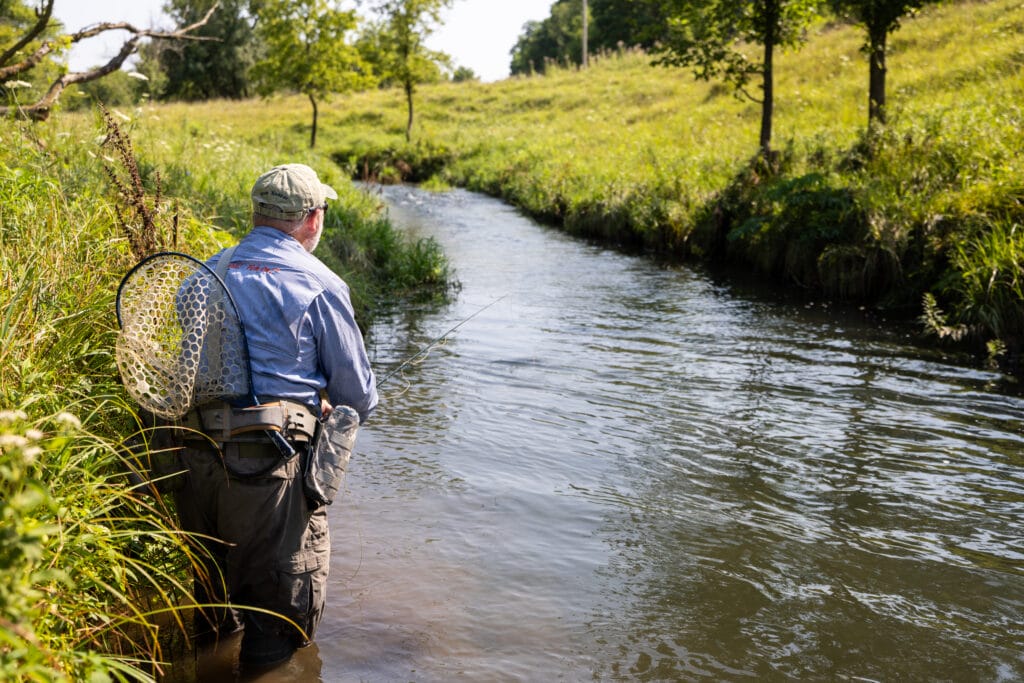
Larger flies will become the norm as the season progresses and hoppers grow as they molt up to a half dozen or so times.
During the best terrestrial fishing, it’s rarely necessary to fish a dropper. We probably fished droppers about half the time during this trip, mostly in the morning. It wasn’t a must, but it did increase the number of takes we elicited. By afternoon a nymph dropper wasn’t necessary.
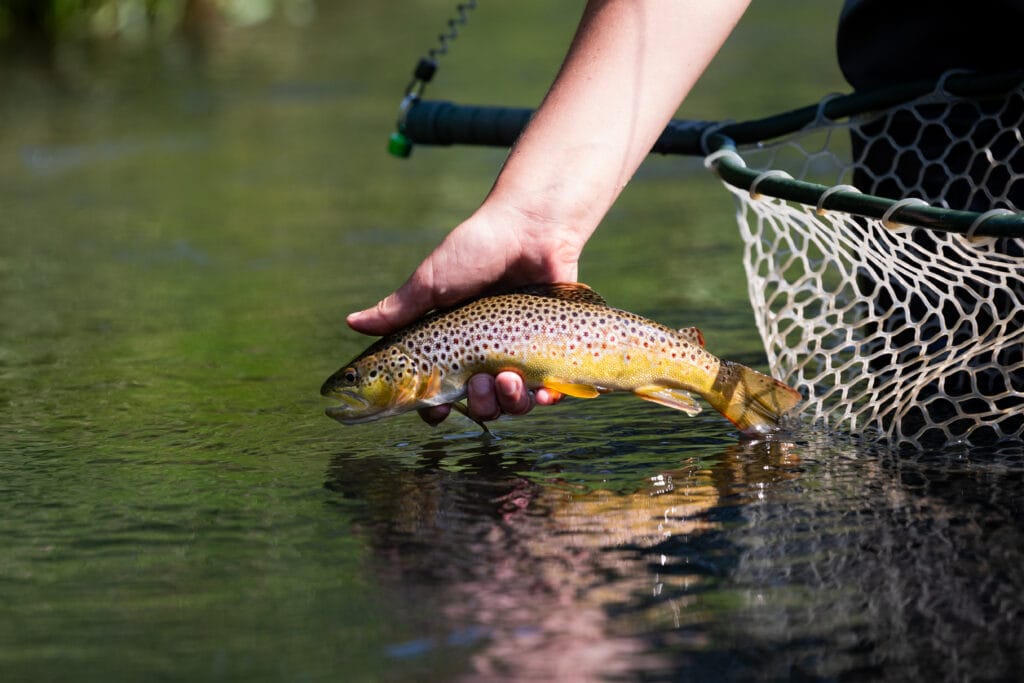
I’ve always liked fishing a second, smaller terrestrial like an ant or beetle as my second fly, and Jonas often did the same with a small ant. I actually rarely dress a dropper terrestrial with floatant because those smaller flies are often even more effective below the surface.
The approach
The first evening I arrived I met Jonas and retired TU Driftless outreach coordinator Duke Welter to hit a couple of TU-restored streams in the Coon Valley.
They both suggested using 2X or 3X tippet. Of course, the heavier tippet turns big flies over better than a light tippet will. But it also reduces the amount of time spent digging flies out of streamside vegetation. In addition, it can help land and release fish quickly.
On the topic of streamside vegetation, many Driftless streams are TIGHT by late summer. Even skilled casters will put flies into streamside greenery.
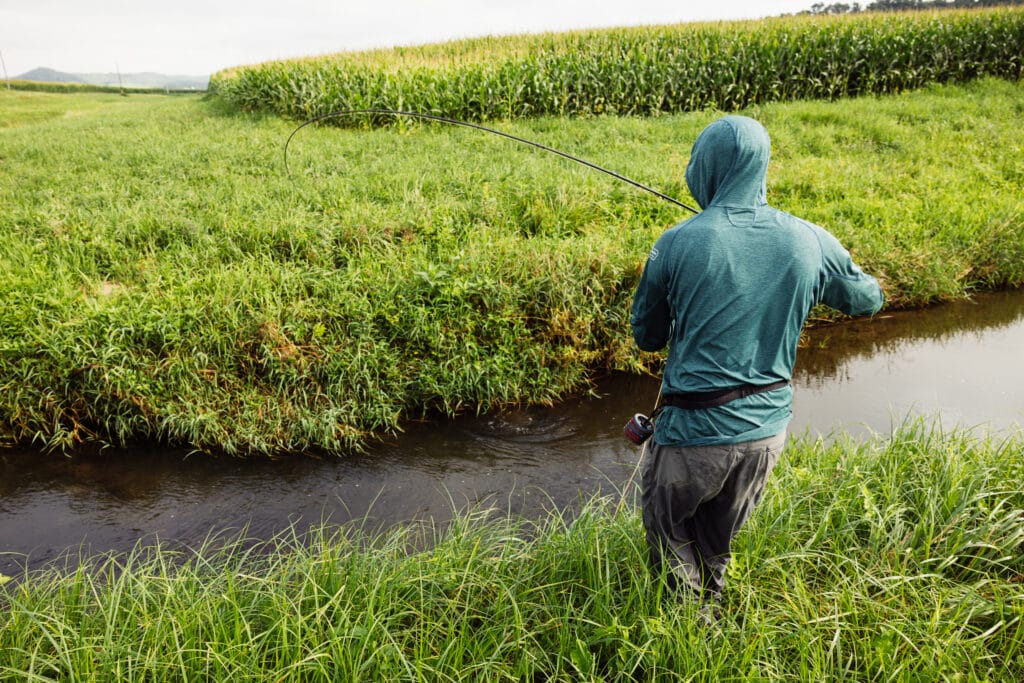
When Duke or Peter would get a cast or backcast stuck in a weed or tree they’d just start yanking and usually they’d get their fly back. The heavier tippet also helps when a bigger fish heads for an undercut bank and the usual tangle of roots in those undercuts.
One fun aspect of terrestrial fishing is that you can cover a lot of water. Sometimes a fish will show itself by rising, either to a terrestrial, to a caddis or to a random aquatic bug — but most of the casting is blind, simply putting the fly or flies where fish should or could be.
“If I get a decent cast or two to a spot and nothing happens, I just keep moving,” Jonas says. “If a fish is going to hit, it will usually hit the first time it sees the fly.”
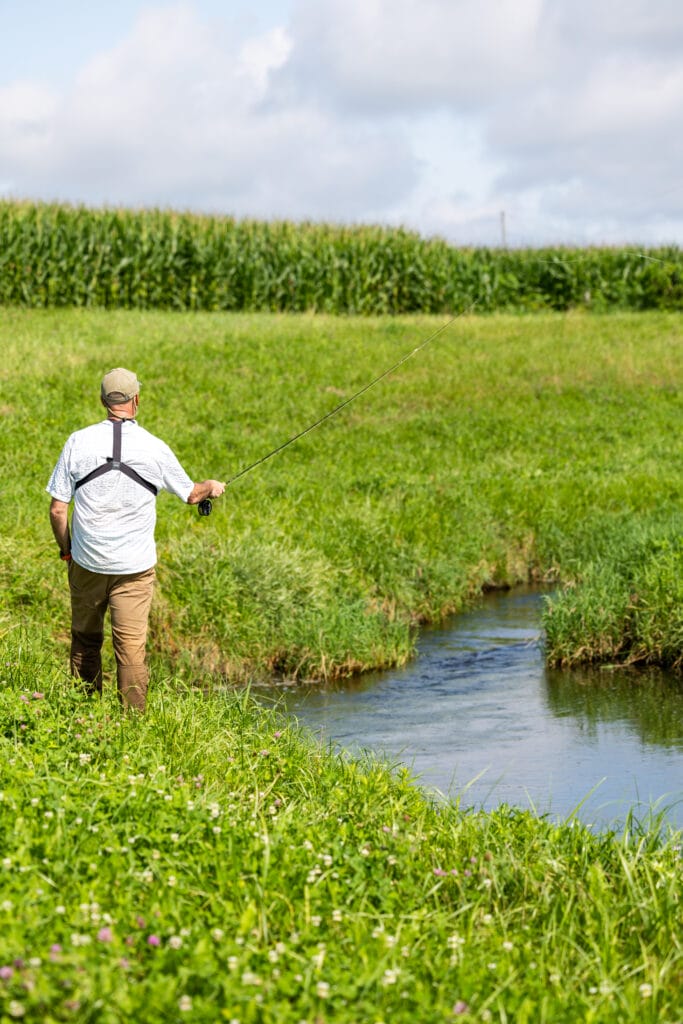
Subtly is not necessary on casts, either. Terrestrials aren’t meant to be on the water, so when they end up there the landing is rarely dainty.
The biggest challenge was avoiding spooking fish. Interestingly, when we were in the stream and wading, even when not being too careful, we spooked fewer fish than when we approached spots from the streambank. These fish know that most of their natural enemies come from above.
Like spring hatches, the terrestrial season is fleeting and will end with chilly fall weather. Until then, there is no better way to chase browns and brookies in the Driftless than with a fake hopper, cricket or beetle.



